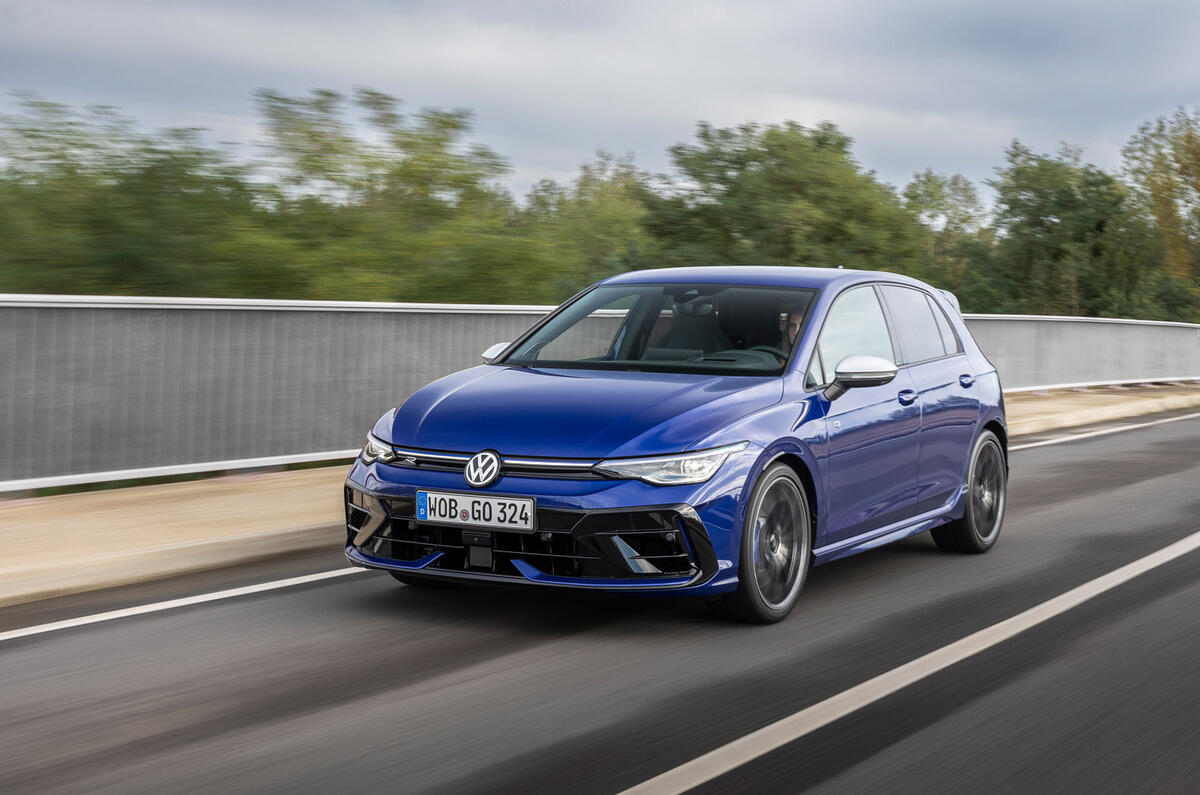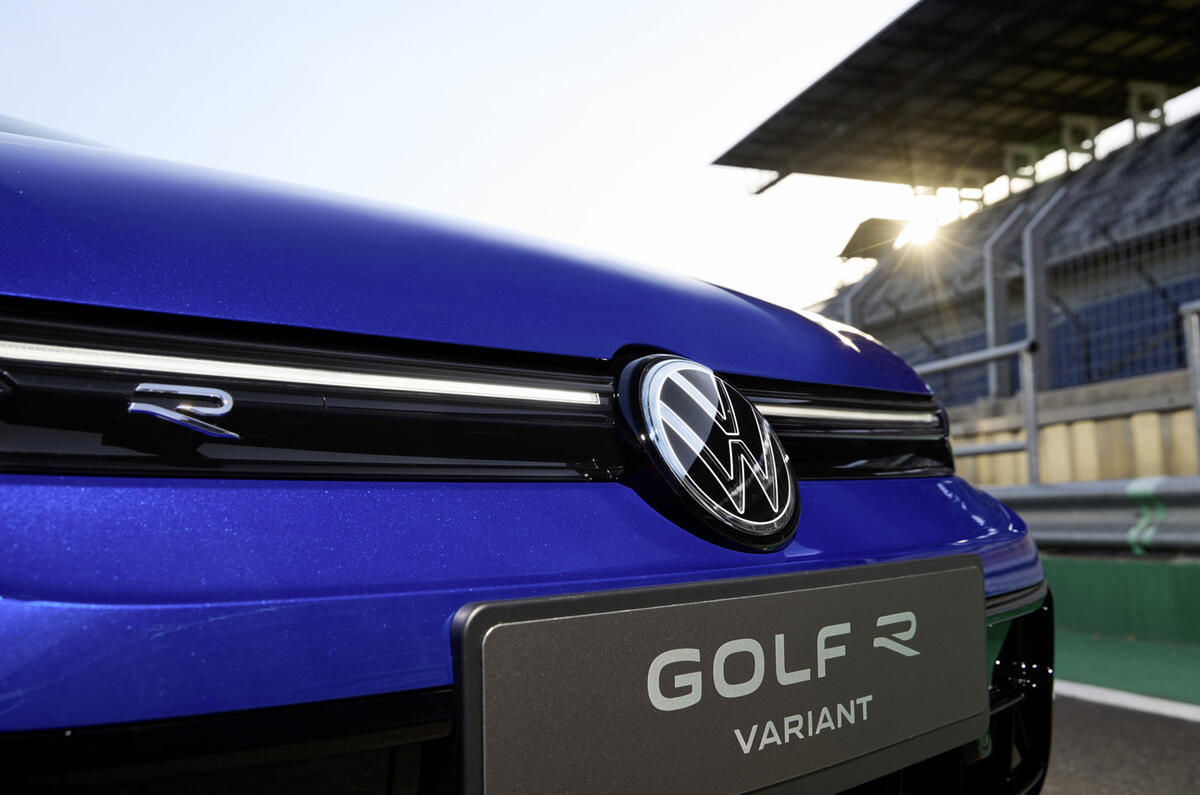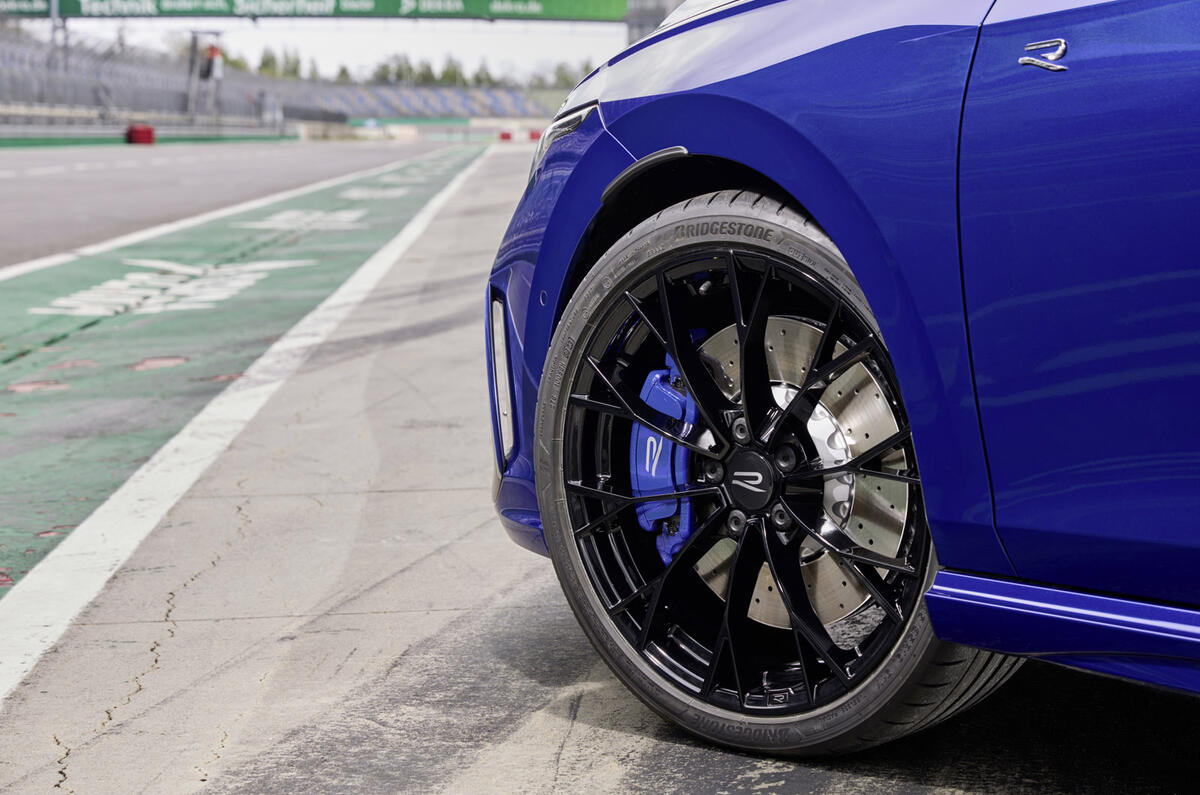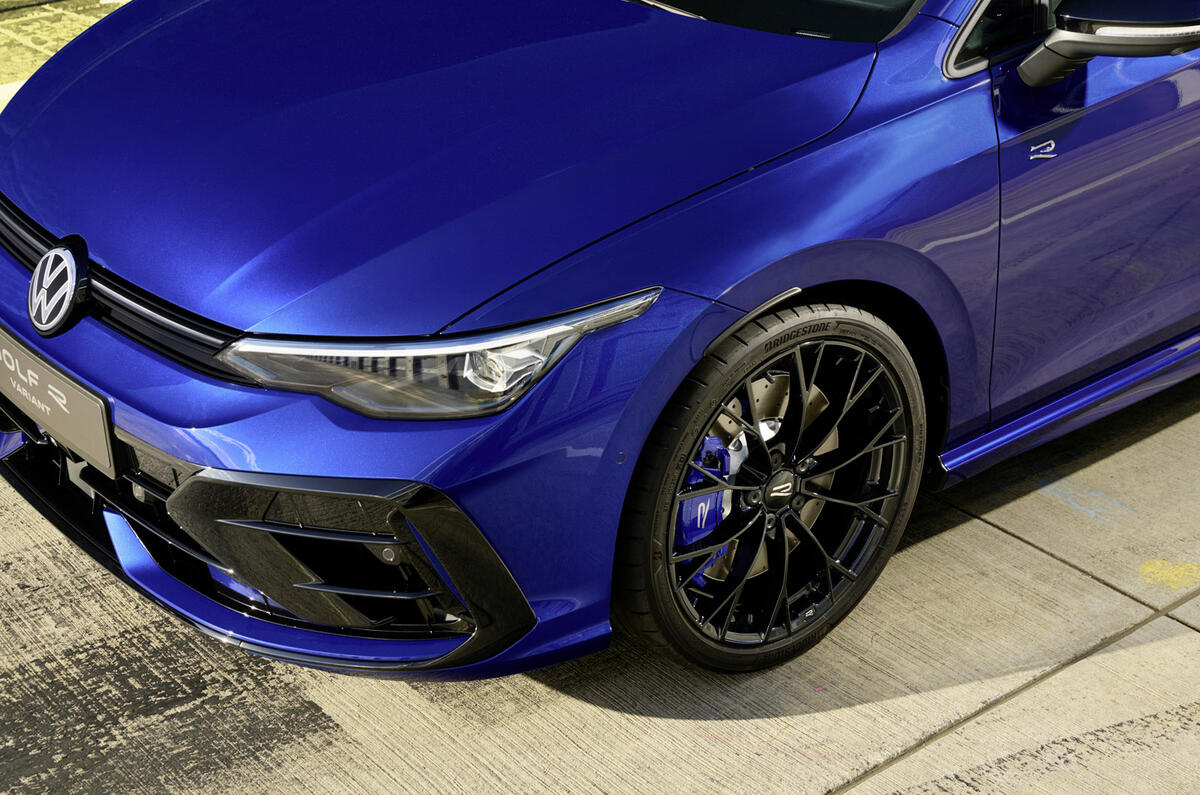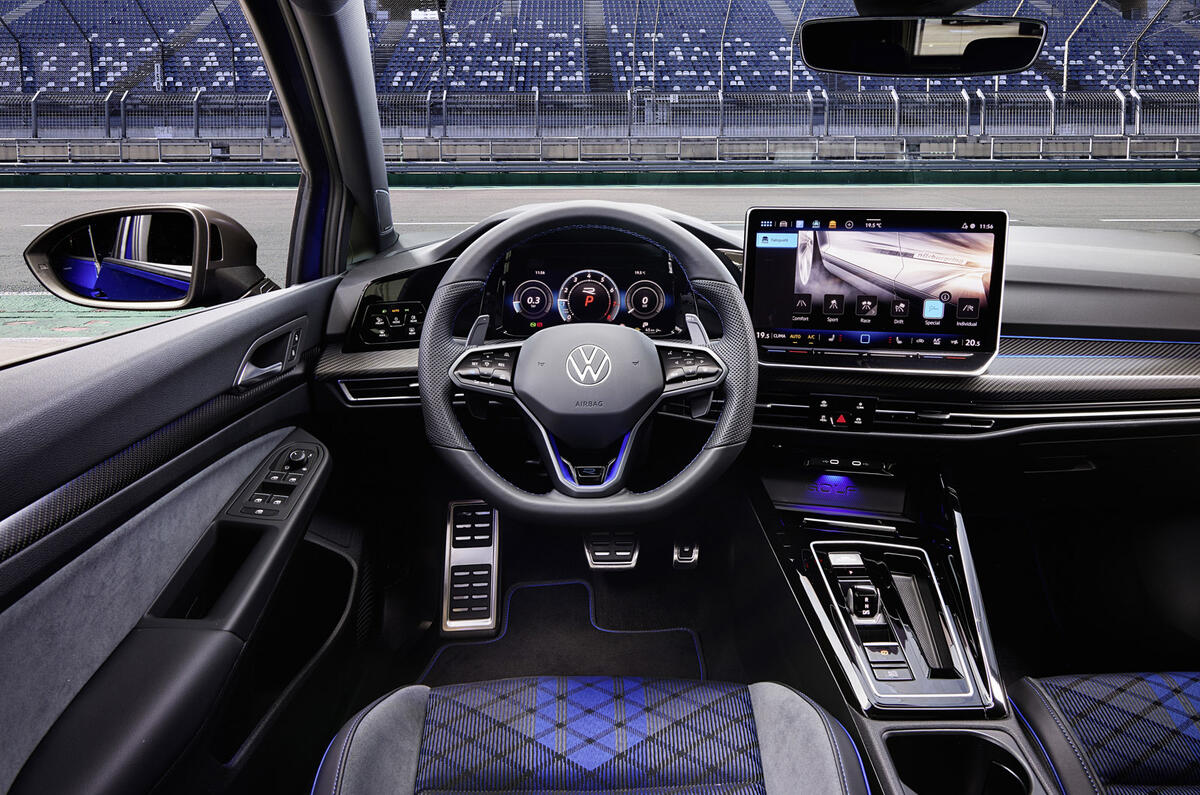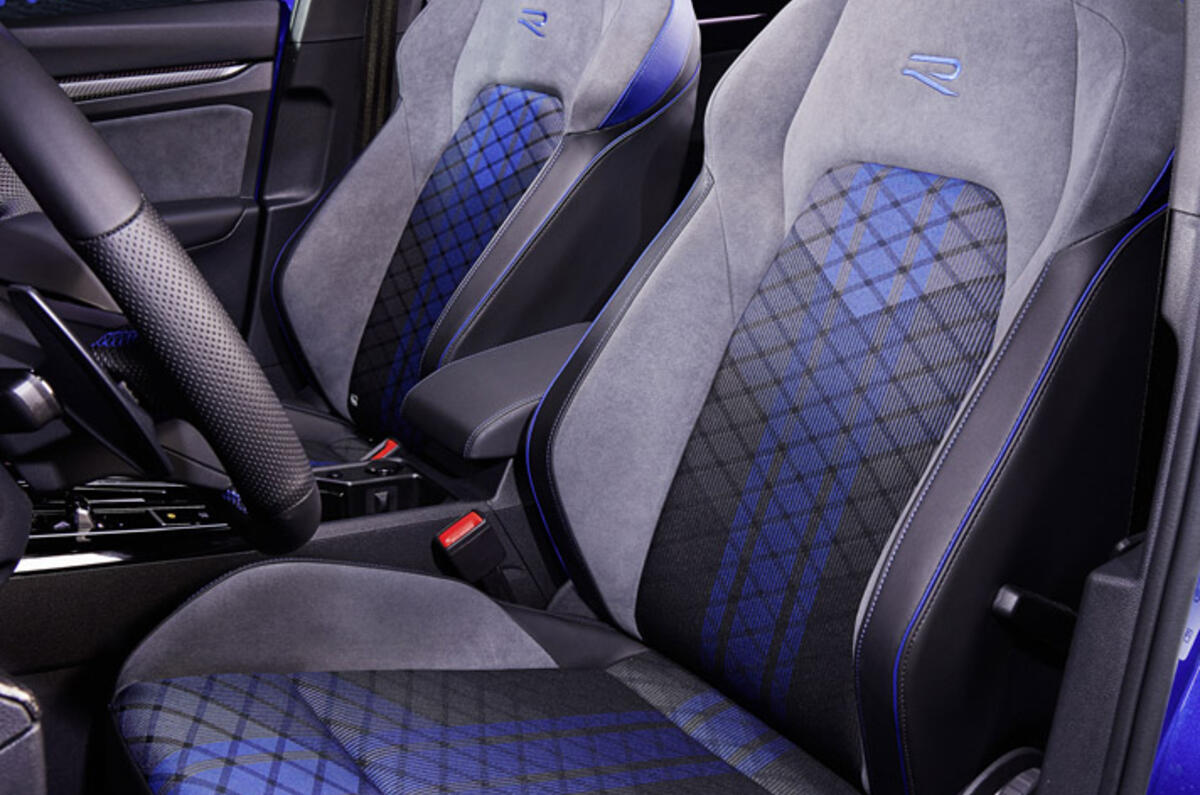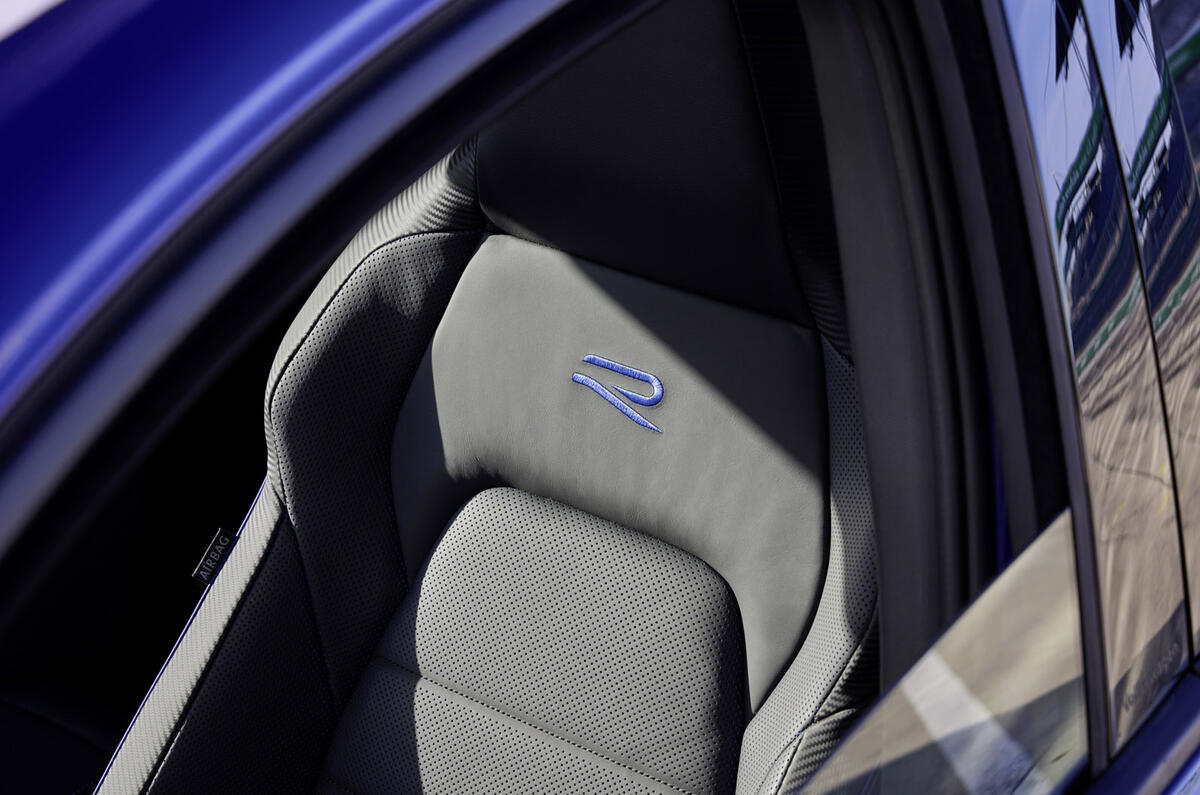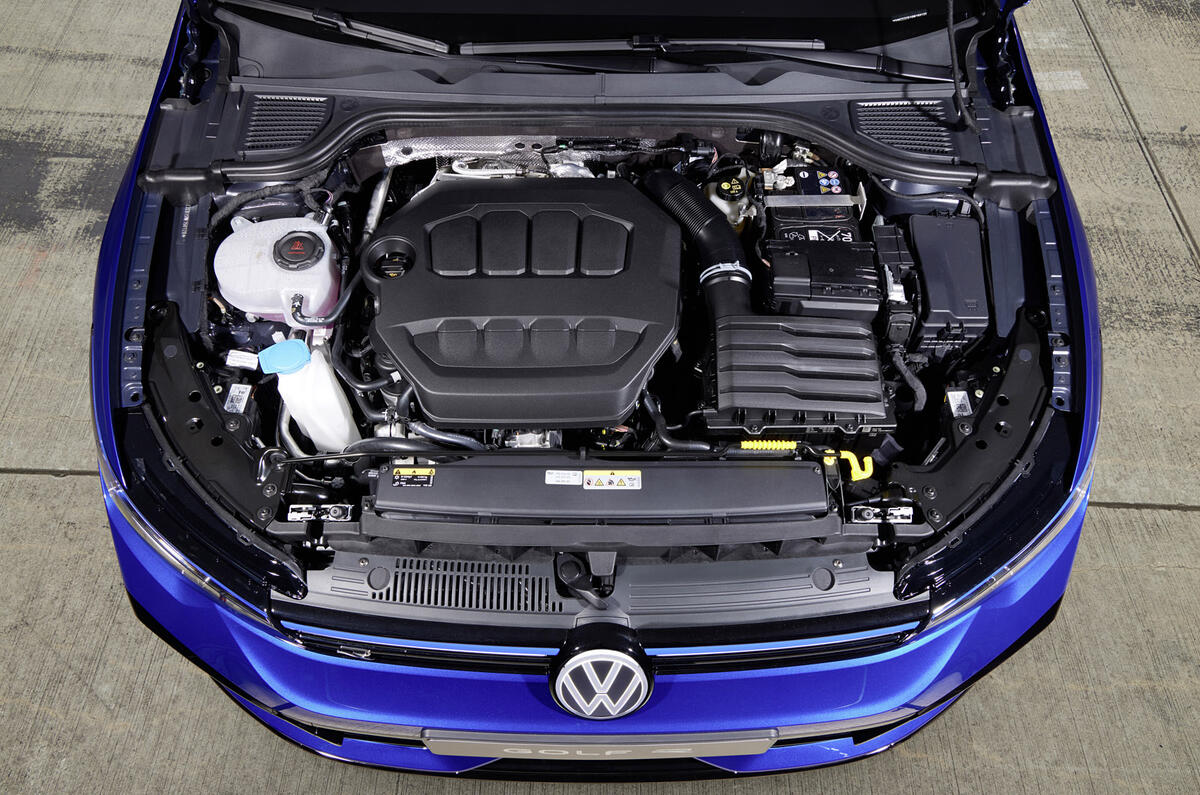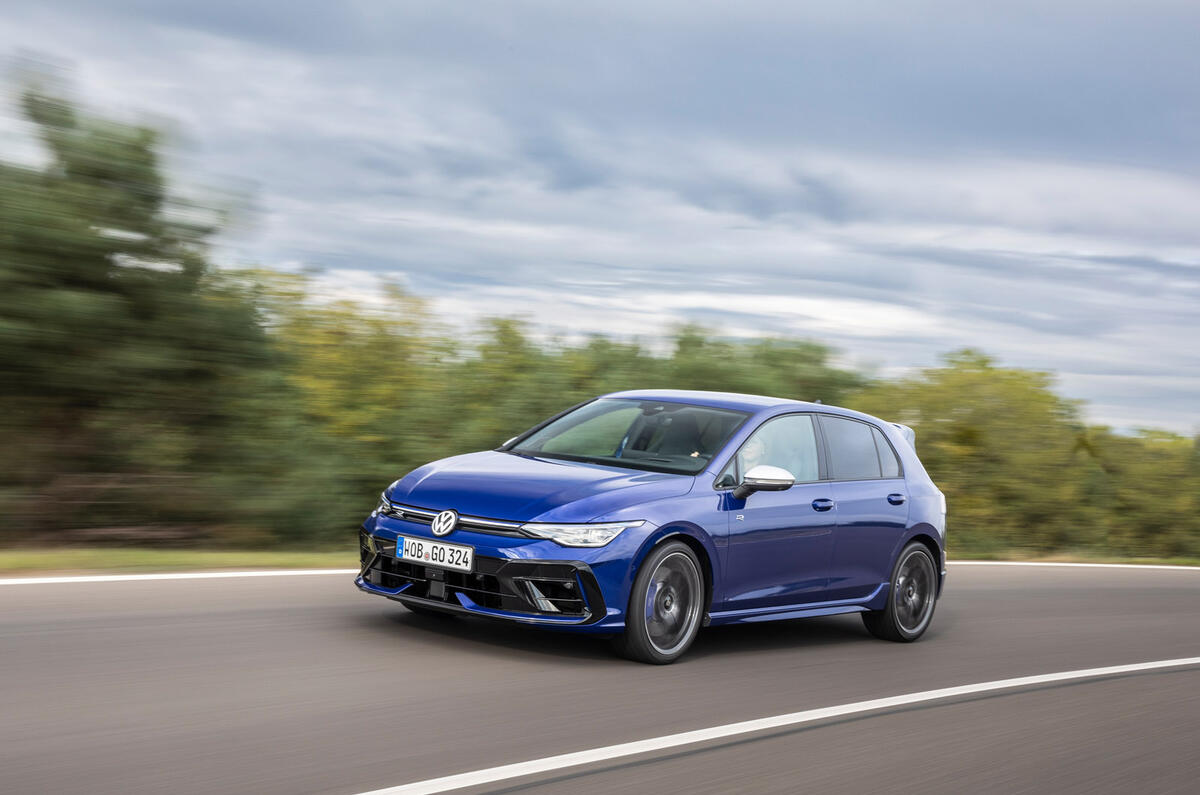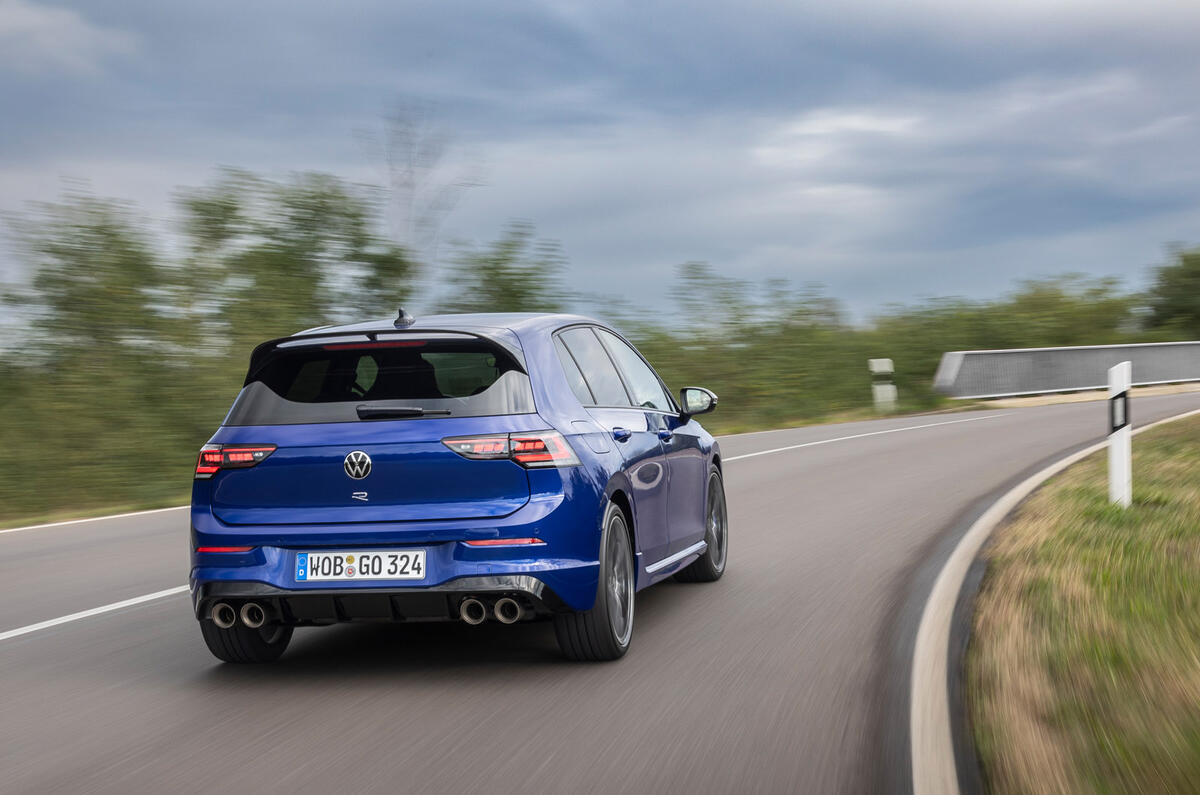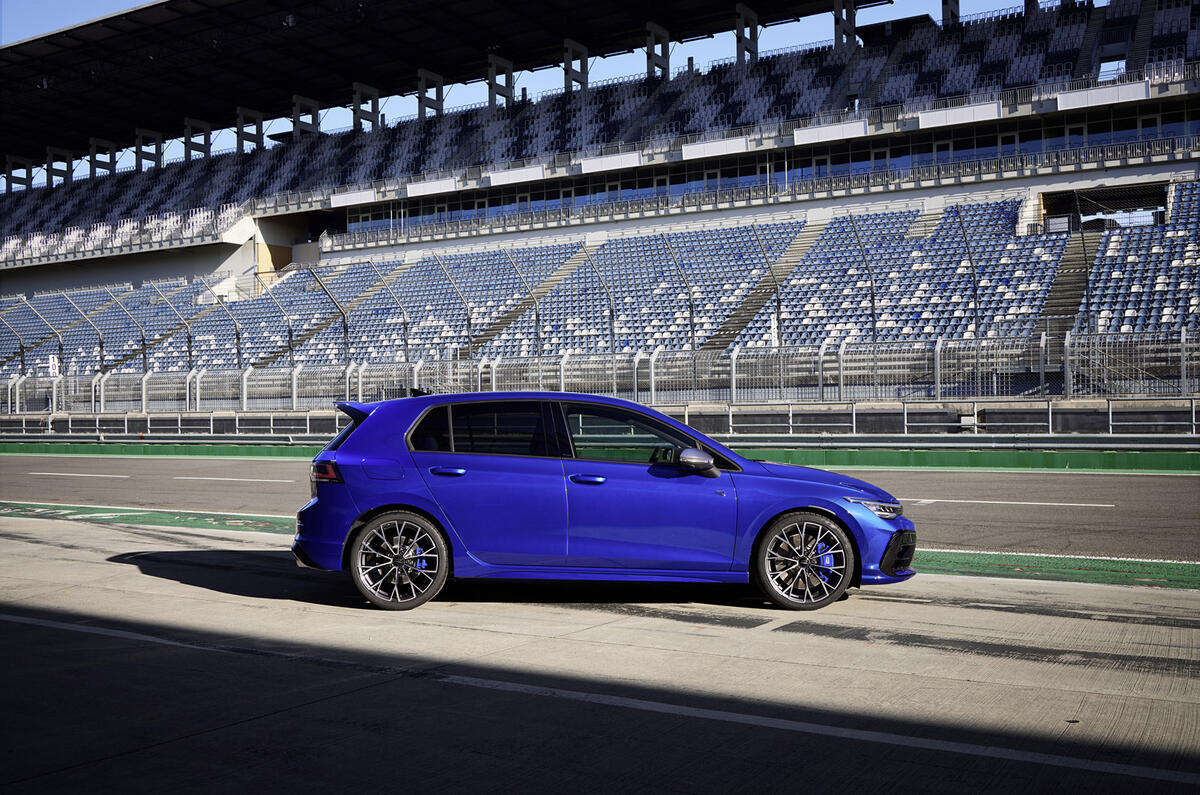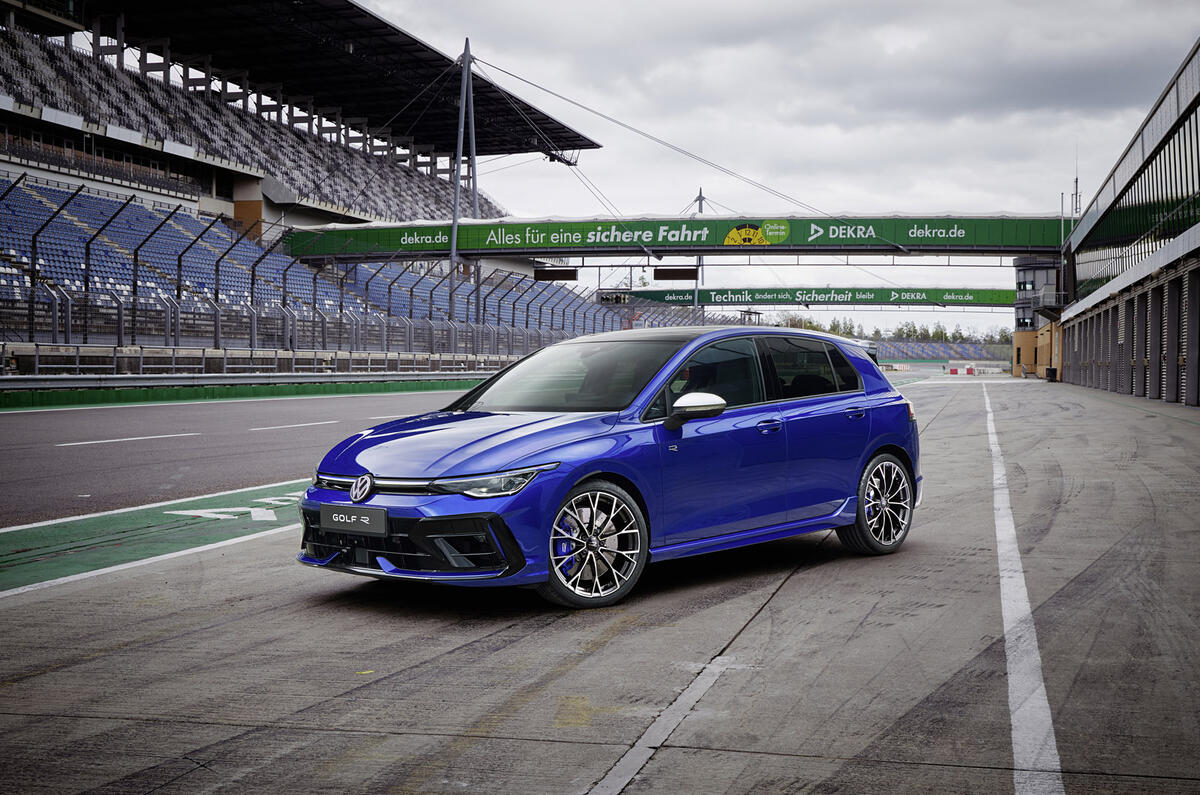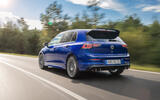The team behind the chassis tuning of both the new Golf GTI and Golf R is headed by Florian Umbach, who previously held the same position at Bugatti, where he was responsible for the Veyron and Chiron. He says the goal with the new model was to provide it with added feel and feedback and a generally more engaging and more dynamic driving experience.
The steering remains a central element to the Golf R’s character, with tactile properties and an agreeably linear build-up in weighting. It is backed up by excellent body control with progressive movements that keep the driver well aware of the limits.
The changes to the four-wheel drive system and newly calibrated torque splitter, which Umbach describes as being “softened”, work together with subtler torque vectoring by braking to bring greater fluidity to the handling. The balance is more neutral, too, and unleashing power in Race mode on a circuit sees most of the drive shifted to the outside rear wheel to nix any understeer. There is outstanding purchase and grip from the optional 235/35 R19 Bridgestone Potenza Race tyres.
The Golf R rides well for a car with such a clear sporting brief. It is firmer than the Golf GTI. But with optional adaptive damping as part of a standard Dynamic Chassis Control (DCC) package, it offers impressive compliance even on the low-profile rubber.


